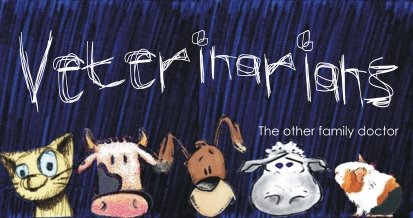
I caught a praying mantis last night on a leaf of one of the very few plants I have in my garden. Not knowing much about this unique species of insects, I feared it would consume the little sunflower seedlings I had painstakingly planted in my garden and which I had cared for for about a month now.
I put it together with a few wet leaves into a little carrier bag punched with a few tiny holes overnight and this morning, freed it into one of the secondary jungles in Shah Alam. I stopped my car by the side of the road, right in front of a police road block and surprised the many policemen there when I walked out with the carrier bag.
"Apa tu?!" (What is that?!) They exclaimed.
"Oh, mentadak mentadu" (praying mantis), I explained.
"Boleh goreng, makan..." (you could fry it and eat it), they replied.
Fry and eat a praying mantis?! Unthinkable!

With my curiosity quite aroused, I later researched this very interesting insect from the internet. Some rather astonishing facts I learnt about praying mantids are as follows:
1. The word mantis derives from the Greek word which means prophet or fortune teller and they were in fact named for their typical prayer-like stance.
2. They are able to turn their heads 180 degrees for excellent vision and hearing.
3. Their antennae are used for smell.
4. Being a carnivorous insect, the mantis feeds primarily on other insects. However, it is not uncommon for larger mantids to consume small reptiles and even small mammals or birds!

5. To capture their prey, mantids use their camouflage to blend in with their surroundings and wait for their prey to be within striking distance. They then use their raptorial front legs to quickly snatch the victim and devour it alive!
6. Praying mantids will also prey on each other, usually during the nymph stage and during mating!
7. When threatened, praying mantids stand tall and spread their forelegs with their wings fanning out wide and mouths open. The fanning of the wings is used to make the mantis seem larger and to scare the opponent, with some species having bright colors and patterns on their hind wings and inner surfaces of their front legs for this purpose. If the harassment persists, the mantis will then strike with their forelegs and attempt to pinch or bite.
8. Since praying mantids feed during the day, they do a considerable amount of flying by night. The night, however, is when bats feed, using ultrasonic sound waves to pinpoint their prey. The frequency of these sound waves indicates the location and distance of the bat's prey. According to Yager and May, praying mantids are able to hear these ultrasonic sounds and when the frequency begins to increase rapidly, indicating an approaching bat, mantids will stop flying horizontally and begin a direct, high speed nose dive towards the safety of the ground. Often this descent will be preceded by an aerial loop or spin. Other times, the entire descent will consist of a downward spiral.
"Oh, mentadak mentadu" (praying mantis), I explained.
"Boleh goreng, makan..." (you could fry it and eat it), they replied.
Fry and eat a praying mantis?! Unthinkable!

With my curiosity quite aroused, I later researched this very interesting insect from the internet. Some rather astonishing facts I learnt about praying mantids are as follows:
1. The word mantis derives from the Greek word which means prophet or fortune teller and they were in fact named for their typical prayer-like stance.
2. They are able to turn their heads 180 degrees for excellent vision and hearing.
3. Their antennae are used for smell.
4. Being a carnivorous insect, the mantis feeds primarily on other insects. However, it is not uncommon for larger mantids to consume small reptiles and even small mammals or birds!

5. To capture their prey, mantids use their camouflage to blend in with their surroundings and wait for their prey to be within striking distance. They then use their raptorial front legs to quickly snatch the victim and devour it alive!
6. Praying mantids will also prey on each other, usually during the nymph stage and during mating!
7. When threatened, praying mantids stand tall and spread their forelegs with their wings fanning out wide and mouths open. The fanning of the wings is used to make the mantis seem larger and to scare the opponent, with some species having bright colors and patterns on their hind wings and inner surfaces of their front legs for this purpose. If the harassment persists, the mantis will then strike with their forelegs and attempt to pinch or bite.
8. Since praying mantids feed during the day, they do a considerable amount of flying by night. The night, however, is when bats feed, using ultrasonic sound waves to pinpoint their prey. The frequency of these sound waves indicates the location and distance of the bat's prey. According to Yager and May, praying mantids are able to hear these ultrasonic sounds and when the frequency begins to increase rapidly, indicating an approaching bat, mantids will stop flying horizontally and begin a direct, high speed nose dive towards the safety of the ground. Often this descent will be preceded by an aerial loop or spin. Other times, the entire descent will consist of a downward spiral.

No wonder Wong Long of Shaolin was inspired to create the Praying Mantis Kungfu! While studying his books on Buddhism in a meadow near the temple, he witnessed two insects engaged in a deadly duel - a praying mantis attacking a cicada. Within moments the praying mantis had killed the cicada. Holding it in its strong front legs, it began to devour the cicada.

Wong was intrigued by the fierce attributes of the praying mantis. He was impressed by the way it had moved in and out and used its front legs to trap and draw in its prey. He saw in the fierce insect's predatory ability, a way to improve his own combat adeptness. Wong used a small stick and played with the praying mantis, observing how it used its skill as a predator to escape harm. It was these very observations that initiated the founding of this powerful martial arts form.

Soon, the Praying Mantis Kungfu was taught as a higher level of kungfu to all the monks of the Shaolin Temple, and it went on to aid the Shaolin monks in their quest in opposing the Manchurian takeover of China.
















